Text
Fartspam on top discord.gg/spamming
Fartspam on top discord.gg/spamming
0 notes
Text
Fartspam on top discord.gg/spamming
Fartspam on top discord.gg/spamming
0 notes
Photo
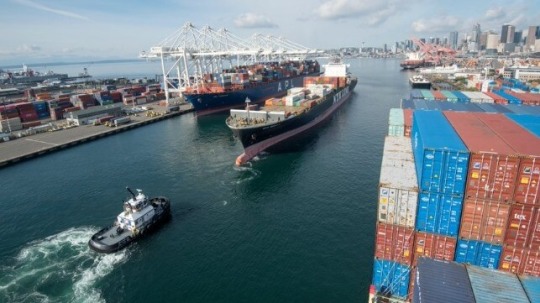
FMC Completes Meetings with Ocean Carriers Regarding Export Services
The imbalance between U.S. imports and exports and the repeated complaints from manufacturers and the agricultural sector in the United States over the inability to export their goods continue to be the driving force for new efforts to examine the ocean carriers' export services. In the latest report from the Federal Maritime Commission, they indicate that the staff is moving forward “expeditiously” with the efforts to examine how key ocean carriers are serving U.S. export shippers.
Repeated complaints from the export community are driving the FMC’s actions along with new initiatives working their way through the U.S. Congress. The concerns of exporters are a key part of the pending legislative reform to the Ocean Shipping Act. After passing both the U.S. House of Representatives and Senate, the bill is currently awaiting a conference committee to address differences between the two versions of the bill. However, having gained broad bipartisan support the bill is expected to move forward into a final form and reach President Biden for his signature.
The FMC, however, has not been waiting for the new authorities it will be granted when the bill becomes law as well as the elements of the bill focusing on revising the export operations of the ocean carriers. In March, at the direction of FMC Chairman Daniel Maffei, the commission staff began a sweeping review of exports and the actions of the ocean carriers.
“Helping U.S. export shippers is my top priority as Chairman and I will ask my fellow Commissioners and Commission staff to utilize the full extent of our authority to ensure American agricultural producers and manufacturers reach overseas markets,” says Maffei.
This week, the staff completed the first phase of the review which is being undertaken by the Commission’s Vessel Operating Common Carrier (VOCC) Audit Program. This included the first round of meetings with 11 shipping lines. On April 19, representatives of CMA CGM, COSCO, HMM, Yang Ming and Zim were scheduled to appear at the FMC. This followed earlier appearances by representatives of carriers including MSC, Hapag, ONE, OOCL, Evergreen and Matson. In each meeting, the staff discussed recent trends in carrier export numbers, placing a particular focus on agricultural exports.
“The information the Audit Team is gathering from the shipping lines will be invaluable in identifying what carriers are doing well in carrying exports and where we must push carriers to do more,” says Maffei.
While the staff is expected to continue to engage ocean carriers on export issues to gain better insight into market trends and performance as it relates to exports, the audit team is expected to present initial findings from the interviews to the FMC at a meeting later this spring.
These are part of a comprehensive initiative underway by the FMC to encourage the ocean carrier industry to increase export service. The commission has also taken steps to improve its exporter assistance services. In addition, the Bureau of Enforcement launched an examination of five independent ocean carriers calling at U.S. ports to determine if their conduct related to the export trades is compliant with U.S. statutes. The chairman has also placed a priority on all cases involving exporters.
The monthly reports for ports around the U.S. high the urgency to focus on exports. The U.S.’s busiest port, Los Angeles, reported as of March 2022, exports have declined for 37 of the last 41 months. In March 2022, loaded exports represented just one percent of the containers moving through Los Angeles with other major U.S. container ports reporting similarly low numbers for loaded exports.
Credit : https://www.maritime-executive.com/article/fmc-completes-meetings-with-ocean-carriers-regarding-export-services
www.arthurexport.com
0 notes
Photo

Ever Forward refloating to be attempted on Tuesday
An attempt to refloat the Ever Forward will be made on Tuesday over two weeks after the containership grounded in Chesapeake Bay.
The US Coast Guard (USCG) said that it along with Maryland Department of the Environment and Evergreen Marine Corporation, and multiple state and local responders, would attempt to refloat the vessel at noon (local time) on Tuesday 29 March.Salvors have undertaken over a week of dredging operations to help free the stricken vessel which grounded after sailing from the port of Baltimore. Poor weather at the end of last week caused a delay in plans to refloat the vessel.
A 500 metre safety zone around the vessel will be extended to 1,000 metres from noon on Tuesday during the refloat operations.“The public should anticipate one-way traffic at a reduced safe speed to resume at midnight or at the discretion of the Captain of the Port following the refloat attempt,” USCG said.
Ensuring the ship’s stability, and monitoring for potential pollution continue to be top priorities of the unified command and responders.”Should the operation be unsuccessful further dredging around the Ever Forward will be carried out with a second attempt made to refloat the vessel on 3 April.The 12,000 teu, 2020-built Ever Forward grounded 13 March in the Chesapeake Bay near Craighill Channel after sailing from the Port of Baltimore bound for Norfolk, Virginia.The grounding captured public attention and imagination coming almost a year after the Ever Given grounded in the Suez Canal on 23 March 2021 blocking the key waterway for six days and causing havoc in global supply chains.
Credit : https://www.seatrade-maritime.com/casualty/ever-forward-refloating-be-attempted-tuesday
www.arthurexport.com
0 notes
Photo

Discover pottery and a mysterious culture
Archaeologists from the Far Eastern Federal University with the Russian Institute of Archeology and Ethnology Ecuala University, Superior Polytechnica del Litoral in Ecuador and Tohoku University in Japan report analyzes of the remains of ceramic clay vessels unearthed at an archaeological site. Real Alto in Ecuador
The research team used radioactive carbon dating from ancient containers. The results of the analysis indicated that These pottery remains date from 4640-4460 BC. And it is associated with the early culture of the Real Alto archaeological site, where this mysterious culture existed around the same time as the Valdivia culture, or cultures along the Ecuadorian coast. It is one of the oldest pottery cultures in North and South America.
The discovery prompted the research team to dig for artifacts created during the unknown culture. If more numbers are found, it may help to define cultural development conditions more precisely. It will also help to understand the process of parallel development of Pacific Ocean communities.
Credit: FEFU press office
1 note
·
View note
Photo

FMC and USDA Targeting Improving Exports from U.S. Ports
PUBLISHED MAR 21, 2022 6:30 PM BY THE MARITIME EXECUTIVE
With complaints continuing that the ocean carriers have made it difficult for American companies to export their goods, regulators are increasing their pressure on carriers to ensure they are providing export services. The Federal Maritime Commission reports that it is expanding its audit program launched last summer to explore export issues while the U.S. Department of Agriculture is continuing its focus on providing more support to shippers.
The issue of exports has been one of the points of contention for months with many shippers saying that carriers are so anxious to get back to Asia that they are making it costly and difficult to export U.S. goods. They highlight the massive cargoes of empty containers being rushed to Asia which they say is at the expense of exports. They are also saying that port congestion and schedule pressures have prompted carriers to skip ports, especially in northern California meaning that growers would have to truck products hundreds of extra miles and into the congestion that has been backing up the southern California ports.
“American exporters deserve access to ocean transportation to sell to international markets every bit as much as overseas sellers get access to U.S. markets,” said FMC Chairman Daniel Maffei announcing the expansion of the Vessel-Operating Common Carrier Audit Program to also evaluate how shipping lines are serving U.S. export shippers. “If the shipping companies continue the cooperative attitude they have by and large shown the Audit Team to date, I am confident we can make progress on some of the issues that have frustrated exporters.”
The FMC is not waiting for the U.S. Congress which has also been focusing on the issue of exports both in its subcommittee hearings as well as the efforts to reform the Ocean Shipping Act. Chairman Maffei added the instruction to the audit teams for the emphasis on carrier export performance and service. Ocean carriers are now being asked to share information about the export services they offer American shippers with the FMC reporting that they will be meeting with 11 carriers to discuss their export programs.
A focus of the FMC’s expanded efforts will include shipping companies that do not traditionally operate in U.S. trade lanes, but entered the marketplace the FMC believes in response to historically high rates shippers are paying to import cargo to the United States. The companies in question will provide specific information related to vessel calls they have made to the United States since June 2021, including the number of loaded and empty containers carried on a ship’s return journey to Asia.
“All ocean carriers calling the United States have an equal obligation to conduct themselves in accordance with the law,” said Maffei. “New entrants to the market—including the so-called pop-up carriers—have all the same responsibilities as companies that have served the U.S. trades for decades. We are especially interested in how the identified companies plan to serve the U.S. export market and how those business models comply with requirements under the statute.”
The information collected in these audits, the FMC believes will provide better insight into not only market trends and performance, but where opportunities exist for individual lines to improve or increase access to service offerings.
At the same time, the U.S. Department of Agriculture is partnering with Northwest Seaport Alliance which operates the ports of Seattle and Tacoma to enhance access to a 49-acre “pop up” site to accept either dry agricultural or refrigerated containers for temporary storage at NWSA in Seattle. The new effort is designed to reduce operational hurdles and costs, meaning that containers with ag exports can be loaded quicker on ships at the export terminals.
This effort is similar to a program launched at the Port of Oakland in California early in 2022 where growers were reporting hurdles to shipping export containers. The USDA reports that it is partnering with the Northwest Seaport Alliance because it has seen a nearly 30 percent decline in the export of agricultural commodities in the last six months of 2021. USDA will be working in partnership with the NWSA’s existing near-dock facility at Terminal 46 in Seattle and the Farm Service Agency will make payments to agricultural companies and cooperatives that preposition containers filled with American-grown agricultural commodities at the “pop-up” temporary site at the Port of Seattle.
Thank. to
https://www.maritime-executive.com/article/fmc-and-usda-targeting-improving-exports-from-u-s-ports
www.arthurexport.com
0 notes
Photo
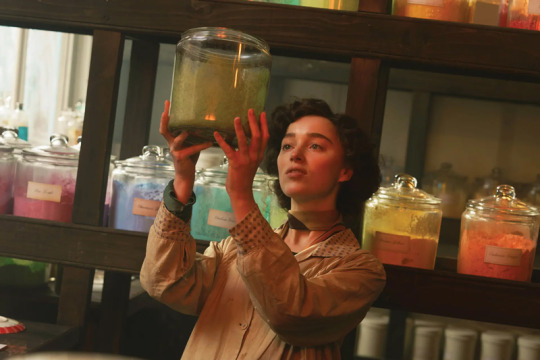
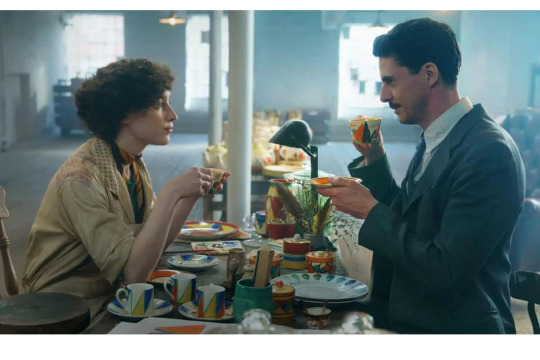


New film starring Bridgerton's Phoebe Dynevor puts trailblazing Art Deco designer and craftswoman Clarice Cliff back in the spotlight
Best known for her ceramic pieces characterised by bold outlines and a vivid colour palette, Cliff was initially derided by the men who dominated her industry
As a young child, it was my job to lay the table whenever we visited my grandmother’s home. My introduction to ceramics came as I put out her everyday Poole Pottery service, a pale turquoise dual-tone affair with a dolphin backstamp on the reverse. But sometimes I would sneak a look at the top shelf of her kitchen dresser and my eyes would be drawn to The Tea Set That Was Never Used—a jaunty collection of angular, inverted conical shapes for the cups and matching pots, jug and sugar bowl, in a daring clash of orange and blue hues. “That is Clarice Cliff,” my grandmother told me. “She was a very famous designer once upon a time.”
Outside ceramic and pottery circles, the name of Clarice Cliff may not be so well known these days but Caspian Films’s new drama, The Colour Room, directed by Claire McCarthy from a screenplay by Claire Peate, is bringing Cliff’s achievements back into the spotlight. Best known for her Art Deco-inspired pieces, characterised by bold outlines and a vivid colour palette, Cliff’s quirky angular shapes were initially derided by the men who dominated the industry. However, she soon proved there was a market for her designs, becoming the first British woman to become a head designer and later having her own factory. At its height, between the wars, her business sold 8.4 million items, including tea sets, jazz-age figurines and her signature Yo Yo vases, to Australia, New Zealand and the US.
“The film captures the atmosphere of the time brilliantly,” says the potter Emma Bailey. “I heard stories from my grandparents, who also worked in the industry, and it was a world devoid of colour. And then this young woman came along and turned the industry upside down.” Bailey started off painting Cliff reproductions for Wedgwood and has been described as her heir. She brushes this off and says she designs what she feels. But, she adds: “It is like Clarice is in me.”
It was a world devoid of colour. Then this young woman came along and turned the industry upside down
Emma Bailey, potter
The Colour Room, with Phoebe Dynevor, one of the stars of the racy Netflix period drama Bridgerton, as Cliff, alongside David Morrissey and Matthew Goode, focuses on Cliff’s early life and career that began when she left school at 13 to start work as an enameller at a local factory near Stoke-on-Trent, the huddle of six English towns at the heart of the area known as The Potteries. It was the centre of the ceramic industry and many commercial producers as well as smaller studios still have a presence there today.
Noted for its huge bottle kilns—the standard bearers for the area’s ambition for Unesco World Heritage Site status that are seen at the beginning of the film belching black smoke—The Potteries is a fine example of the UK’s industrial as well as artistic heritage. In the 1920s, the whole area was choked with smoke and grit, says Bailey. In this monochrome world, it is no wonder that the young Clarice stood out. The film’s producer Thembisa Cochrane and her team went to great lengths to recreate an authentic landscape, filming at Middleport Pottery, where we first meet Cliff. She bursts onto the screen in a glorious teal coat, as if to insist she would not allow herself—or her revolutionary ideas—to blend into the sooty surroundings. This and the film’s other striking costumes are by Anushia Nieradzik, who is also a painter—a combination deliberately harnessed by the production team, Cochrane says.
Specialist advice on the film came from one of the world’s foremost experts on Cliff, the auctioneer Will Farmer, who is the ceramics and glass expert on the BBC’s Sunday-evening staple Antiques Roadshow. Eagle-eyed Roadshow watchers may also spot his cameo performance in an early scene. Farmer was joined by the ceramicist and lecturer Louise Adams—granddaughter of John Adams of Poole Pottery fame—who, with her partner Mark Delf, was the on-set modeller and sculptor. This meant that a full artistic team was able to coach the cast, who needed to be able to handle clay convincingly. Delf was also responsible for the reproduction of Cliff’s bust of the first wife of her employer, Colley Shorter. He commissioned the bust from her when he became aware of her talents—he saw potential in Cliff’s eye for colour and her business savvy. Cliff and Shorter later married, and their affair is a key element of The Colour Room’s story.
news from
https://www.theartnewspaper.com/2021/12/22/a-cliff-face-portrait-of-a-pioneering-ceramicist
www.arthurexport.com
1 note
·
View note
Photo
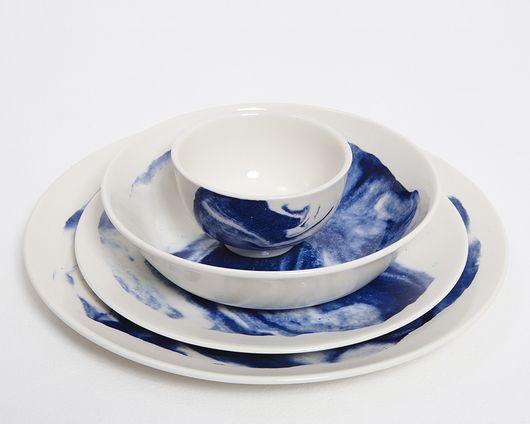
Largest ceramic manufacturing cluster bears brunt of gas price hike
The industry is facing natural gas supply and price hike issues
The Russia-Ukraine conflict has had an impact on Asia’s largest ceramics manufacturing cluster in Morbi (Gujarat) as the industry is facing natural gas supply and price hike issues. Housing more than 1,000 units that manufacture ceramics and vitrified tiles for both domestic and international markets, the cluster in Morbi largely consumes natural gas supplied by state-run Gujarat Gas
information from business-standard.com
0 notes
Photo
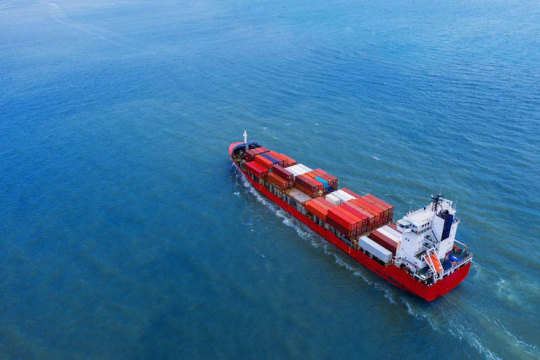
Japan's long-distance demonstration of independent ships is a great achievement.
Japan recently completed its fifth demonstration and test as part of the fully automated sailing project known as MEGURI2040, starting in February. The program, which includes more than 30 companies and 60 organizations, has demonstrated different aspects. of unmanned boat operations This includes maneuvering, docking and departure using container ships and ferries. in the last test A coastal cargo ship was sent over a long distance over four days. This includes navigating through heavily congested waterways.
According to the association's report for trial use The vessel is equipped with an automated navigation system and is connected by satellite and ground communication lines to the Fleet Operations Center. on the go They tested functions such as remote maneuvering and engine malfunction prediction. to support the operation of completely self-propelled boats from shore
The experiments were conducted in a manner that completely simulated the actual operation of future autonomous warships. Completing a series of journeys Such operations include maneuvering offshore. sailing in the bay coastal navigation and maneuvering at the wharf using a fully automated navigation system They noted that one of the most challenging spots in the demonstration was sailing through the busy Tokyo Bay. On average, 500 ships move through the water each day.
The DFFSA system designed for this trial has three main components. It consists of a ship's navigation system that controls the ship's autonomous operation. There is also a shore system that monitors and supports ships. Including remote ship management function and information systems that help stabilize communications between ships and remote coastal operations centers. local traffic and the status of the ship's equipment in an emergency The system can be switched to remote operation from the fleet operations center.
Yohei Sasakawa, chairman of the Nippon Foundation, the curator said: “The success of fully automated navigation is one way of solving many problems. This included lower economic activity associated with an aging population and a declining birth rate. Insufficient crew capacity and marine accidents.” All demonstrations and research projects “This technology was developed in Japan. It is the first technology in the world. We also hope to contribute to the creation of universal rules for fully autonomous navigation.”
In their demonstration, they used the APExS (short for Action Planning and Execution System for Full Autonomous) framework, according to NYK, a leader in its development. The APExS-auto framework extends the unmanned ship framework that creates a guideline for fully unmanned ship operations. risk analysis The computer will perform the maneuver after approval from the crew.
The NYK reports that ClassNK Classification Association and Bureau Veritas have both reviewed the framework's safety and certify the conceptual design that issued an Approval in Principle (AiP) for a fully autonomous ship framework. This is the first time an autonomous boat system has been approved in Japan.
0 notes
Photo




jar forming In making a jar, it will take up to 3 people to mold it and divide the molding into 3 parts, namely the base part. The stomach part and the mouth of the jar are sent to the jar decoration department as follows: 1. Molding the base of the jar It is called shaping legs. When the base of the jar is finished, it will be left to dry and then molded the second part. next 2. Molding the belly of the jar is called Jorpan. 3. Molding the mouth of a jar is called a jar tree. When the mouth of the jar is finished, the mouth of the jar must be swiped. Use a cloth to draw a draw along the mouth of the jar. then leave to dry When it stays up, it doesn't have to be very hard.
Image source: ADVANCED THAILAND GEOGRAPHIC Year 8 No. 60 January 2003
1 note
·
View note
Photo
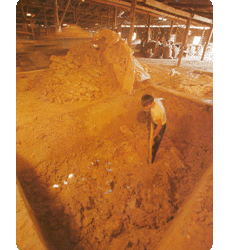


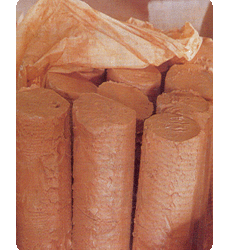
The process of making dragon jars in Ratchaburi province.
Dragon jar of Ratchaburi province There is a method of molding the jars of other provinces, they are different in terms of glazing the jar and drawing dragon patterns, which have the process of molding. The steps are soil preparation, forming, drawing on the jar. jar coating and burning jars which has the following details: The clay used to make the jar must be clay. But it must be fermented in the pit for two or three days in order to soften the soil evenly. When removing the clay from the composting pit, put the soil in the kneading machine and add fine sand to mix according to the ratio. Two parts clay, one part sand. When the mixture is ready, knead the soil to be homogeneous. The kneaded clay is neither too hard nor too liquid. The threshing soil will then be piled up into a large pile of soil. When it comes to forming a jar, it is necessary to use a tool to divide the soil from a large pile of soil. This clay cutting tool is called a cutting iron.
Soil preparation and soil preparation steps look at the illustration
Image source: ADVANCED THAILAND GEOGRAPHIC Year 8 No. 60 January 2003
1 note
·
View note
Photo


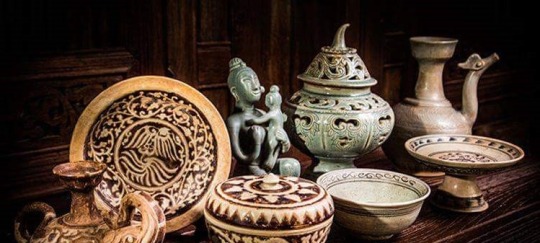
History of pottery in Thailand
Art created from this terracotta material, whether for its utility or for the convenience of living through the geographical environment. to beliefs, religions and traditions These are important factors that allow humans to use their thoughts, observations, and collect creative experiences to convey them into works of art in the form of terracotta as it appears to this day.
In Thailand, there is evidence to believe that art in the form of terracotta has been invented for more than 10,000 years from excavations and studies of clay fragments by archaeologists. In conclusion, terracotta fragments of all forms can be found ubiquitously classified as human habitation from prehistoric times to modern times. Shows that humans have always been close to pottery.
In the early stages, humans choose to recruit for habitats near soil, water, and sunlight, so they experience these three things every day until their death. The experience that humans have always seen is the sight of wet soil along the water's edge. It is the image of footprints when trampled on. saw the water flowing and eroding the soil have seen the soil which has the same toughness saw the soil soften when it was wet when it rained saw the wet soil dry out in the sun Seeing for a long time, circulating over and over again until humans accumulate these experiences and induce people to think of clay to mold into various forms. according to your own imagination Then dried and used as a utility (not yet burned). Some people find that wood resin or animal oil is applied on the containers so that they can be stored with water and also made them durable in The usability is good as well. In later eras, advances in the use of fire occurred, or perhaps due to the fact that vessels placed near the fire were so strong that they did not melt when they were hit by rain. From this point, it was probably a medium for people to know how to use that clay pot to be strong fire instead of drying it in the sun. In the early days, this pottery making took place in many places in the world besides Thailand. And every place has been developed step by step until it is a handicraft. that can demonstrate the evolution of that nation's culture
Clay work is associated with human life more than iron work, especially in ancient times, at least there must be a pottery pot in every home.
The form of pottery in prehistoric times was simple. There are similarities in the technique of molding and firing. is the fire in low temperature In Thailand, found at an old house Kanchanaburi Province, Ban Khok Charoen, Lop Buri Province, Ban Khok Phanom Di, Chonburi Province, Tham Phi, Mae Hong Son Province and at Ban Chiang Udon Thani Province, etc.
In the Old Stone Age, humans lived in caves and shacks. Earn a living by collecting forests and hunting. Still not known to use pottery. Until entering the Middle Stone Age, humans developed until they began to know how to use fire and make pottery for the first time. The period of time until entering the new stone age, this era is capable of making pottery well. Has a smooth, polished surface, thin texture, beautiful shape. Even though time has passed, it has come to the metal age in which humans are known to use metal to mold and make tools and utensils. But those people still make and use earthenware in daily life and still see it today.
Thailand's famous pottery makes nations Get to know Thailand around the world Including prehistoric colored painted pottery at Ban Chiang, Nong Han District, Udon Thani Province There were people in the area unearthed a large number of painted terracotta fragments from digging wells. Or dig a hole to bury a pillar house, so it has been awakened and interested in the Fine Arts Department in the year 1963, so it has been explored until the year 5209, thus doing an archaeological excavation. The results of the excavations revealed the past and the origin of this ancient community. as well as being aware of the advancement in technical technology Especially the painted and colored containers, which are strange, beautiful, and peculiar things that have never been seen anywhere before. Despite being discovered in Khon Kaen, Nong Khai, Sakon Nakhon, Loei, and many other provinces around Udon Thani, the shape of the pottery has a strange shape, which can be classified into 5 main types: pot, vase, pan, round bottom. A round-bottomed people, etc. For the patterns, there are both people and animals that are written with skillful craftsmanship and very delicacy.
After that, it was Sangkhalok, which is believed to have originated in Sawankhalok City. Sukhothai and the city of Chaliang In the area of Wat Phra Si Rattana Mahathat, Sukhothai Province, it has been done since before the Phra Ruang Dynasty. It is assumed that China would come in to make pottery first and pass on the method to the Thai people later. By observing from the colorful patterns, it is a style of Chinese art at the end of the Song Dynasty. The Chinese themselves have fled the invasion of the enemy to establish the capital at the Yangtze River and come south into Thailand. Vietnam, Cambodia, the other way into Thailand is in 1837 during the reign of King Ramkhamhaeng the Great. has given many Chinese potters to Sukhothai And spread up to Chiang Rai is very famous for the pottery at Wiang Ka Long, also known as Wiang Kalong oven Sangkhalok-style pottery of Thailand is characterized by a solid glaze. Not a clear glaze like Celadon. causing the Philippines and Japan to study and imitate the Thai society
2 notes
·
View notes